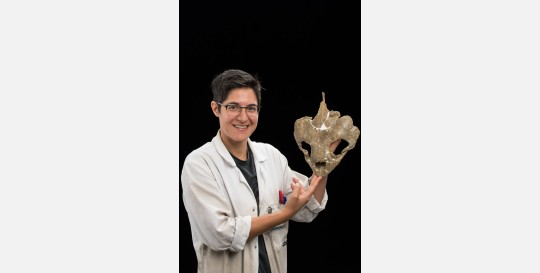PERISSORIGIN - Origin and early radiation of perissodactyls based on precious fossil collections
Completed
01.02.23 → 01.05.25

Perissodactyls are odd-toed ungulate mammals that include extant horses, tapirs, and rhinoceroses. Although most perissodactyls today are threatened with extinction, they are in fact the survivors of a much more diverse group that was very abundant during the Paleogene (66-23Ma). They also included the largest known terrestrial mammals, such as Paraceratherium. The first stages of their evolutionary history, starting at cat size, remain however poorly understood and several hypotheses have been put forward to explain their origin. Some fossil evidence links them with the Phenacodontidae, extinct primitive ungulates, suggesting a North American origin. Yet, the recent discovery of Cambaytherium in India, which shows a very close morphology to that of the first perissodactyls, makes of this mammal the best candidate for the title of sister group to the perissodactyls. However, no major synthesis with a global vision and a broad taxonomical sample, including key European fossil specimens, has yet been carried out today. This project proposes to examine the questions related to the origin of perissodactyls, from a phylogenetic and palaeogeographical point of view. It will provide a major synthesis of the fossil record and place it in an upgrade phylogenetic framework, and will also study and monitor the major evolutionary trends that are emerging within the five perissodactyl superfamilies, at the very beginning of their diversification. The methodology is based directly on the study of fossil specimens from our precious collections, including a series of exceptionally well-preserved complete skeletons of the equid Eurohippus and of the STEM-perissodactyl Hallensia from Messel (a UNESCO World Heritage site). Micro-CT scanning of these specimens as well as all RBINS type and figured specimens of early perissodactyls will allow to access hidden and therefore unknown characters, which will be described for the first time. This work will also document major evolutionary trends within the different basal superfamilies, such as those related to molarization patterns, dental homology, finger reduction which will enable us to better understand the ecology of these early perissodactyls.
Funding
Belspo BRAIN project



Internal members
- Thierry Smith
- Jérémy Tissier
- Annelise Folie
- Nathan Vallée Gillette
- Cécilia Cousin




